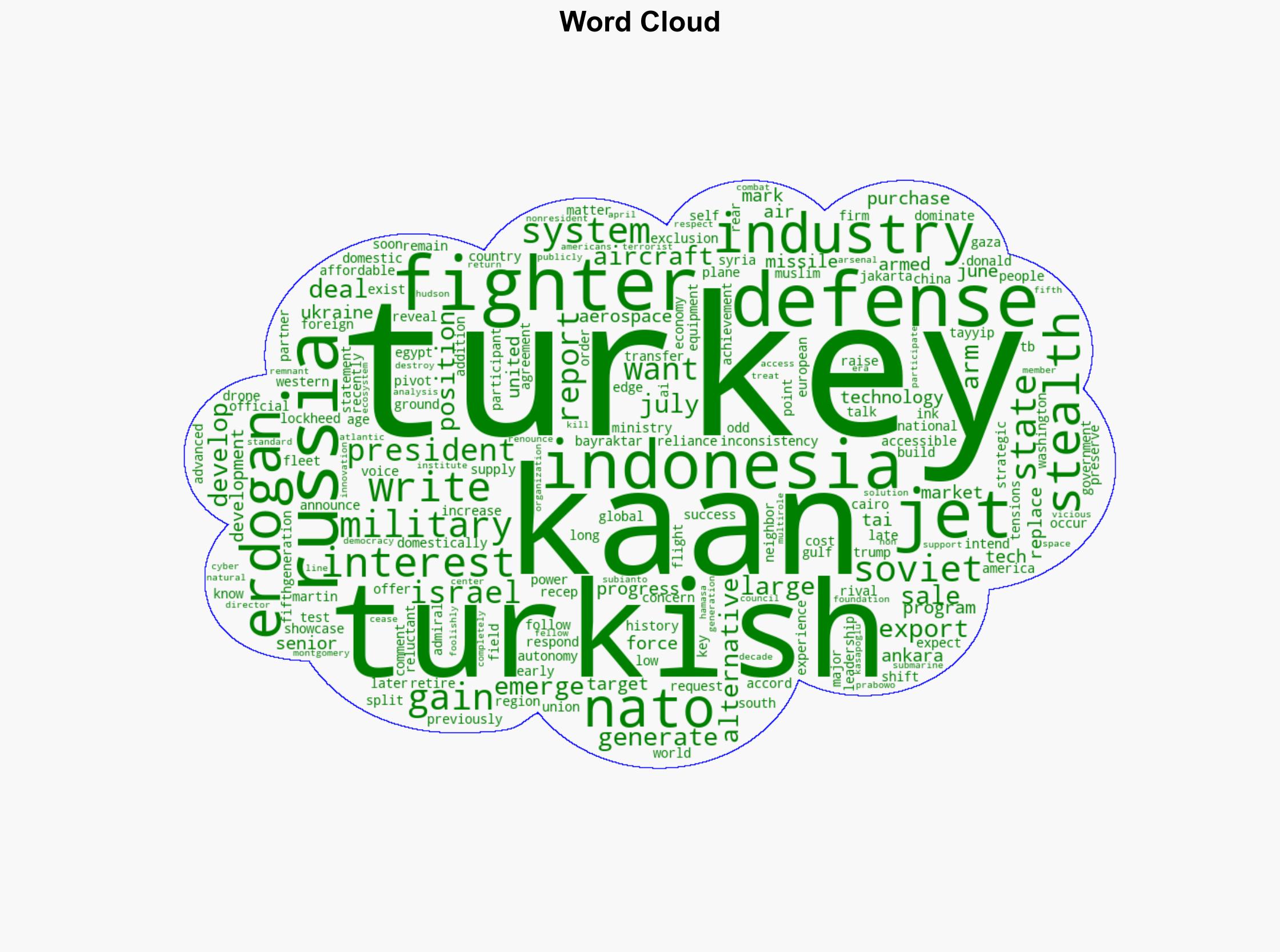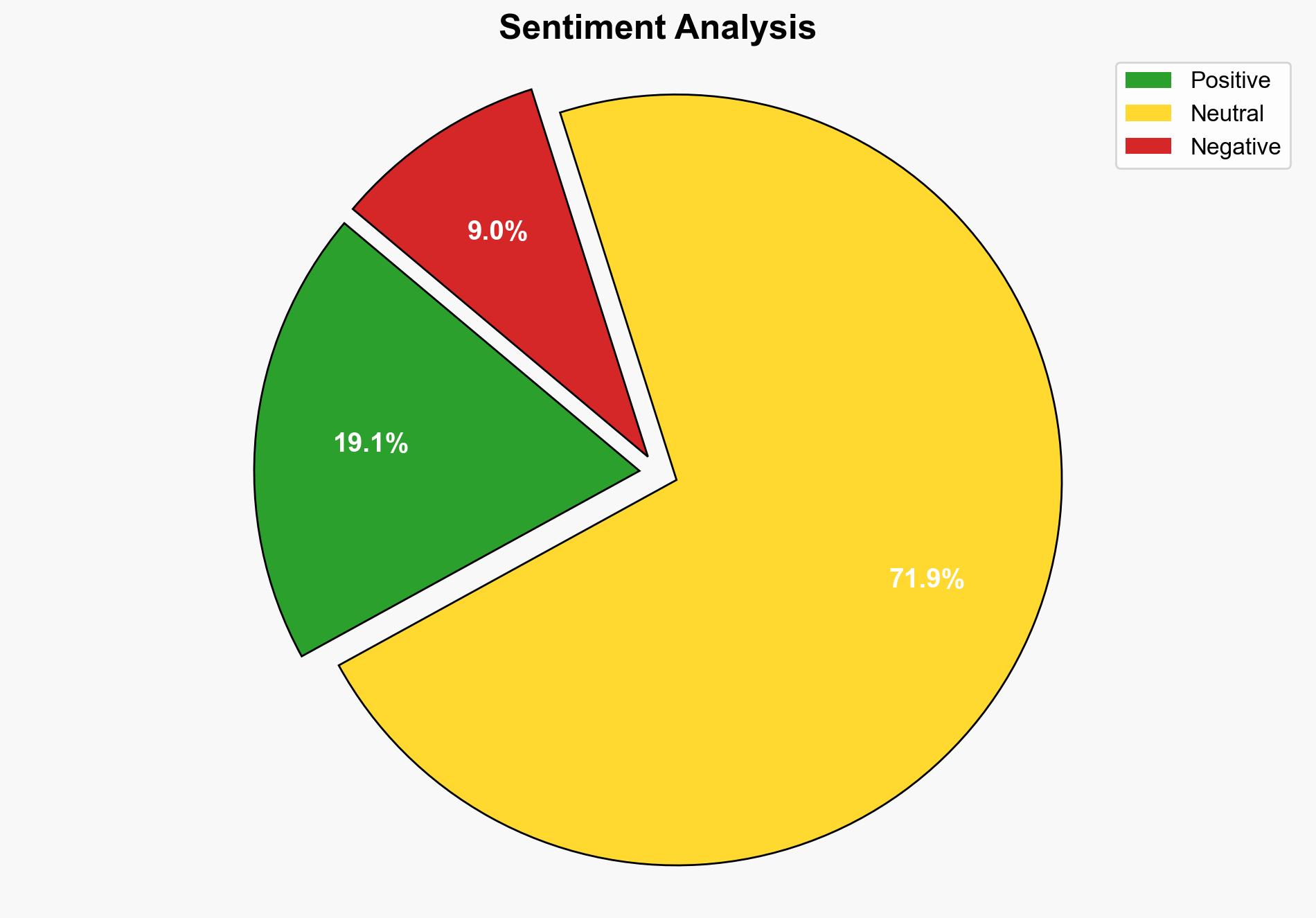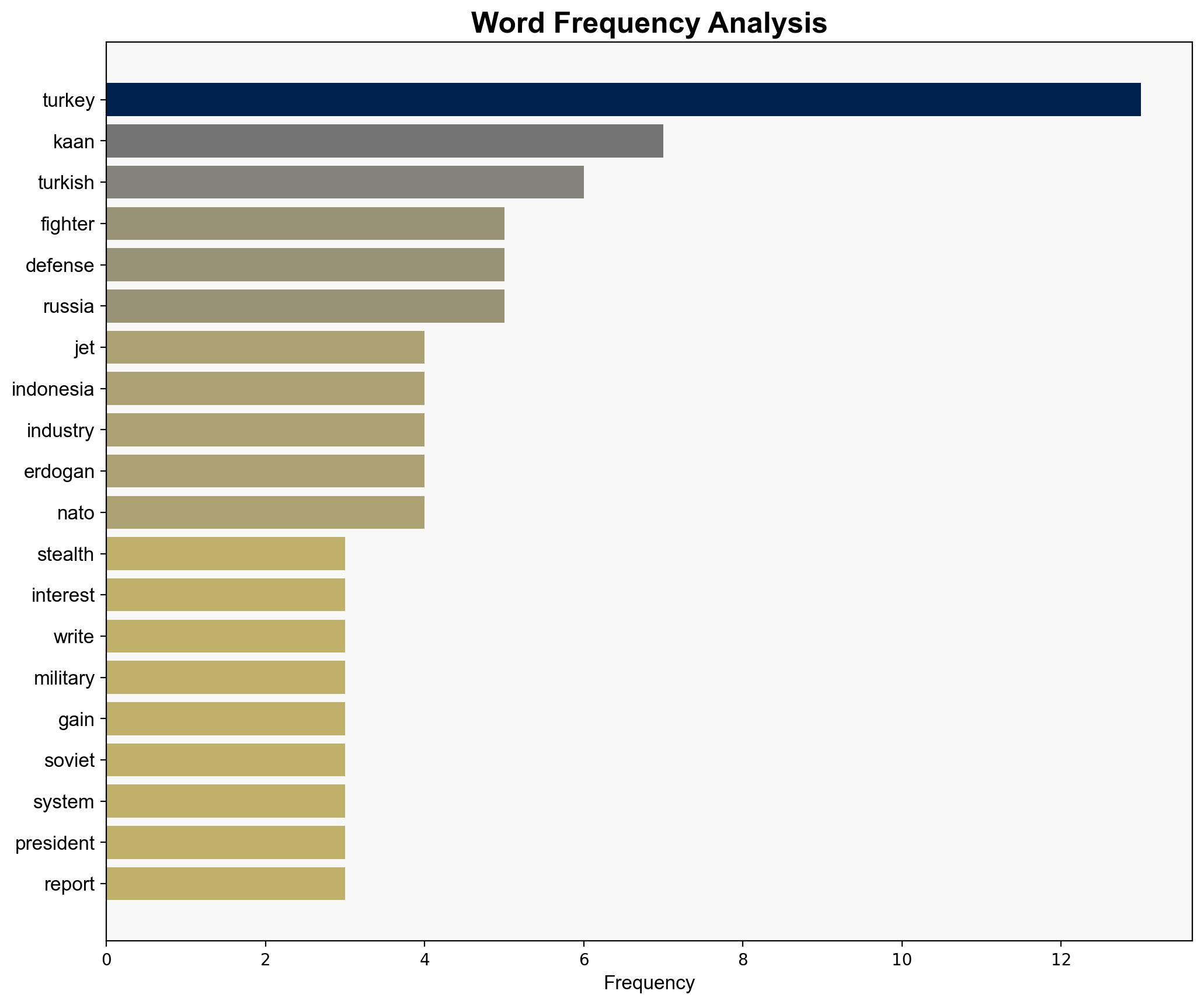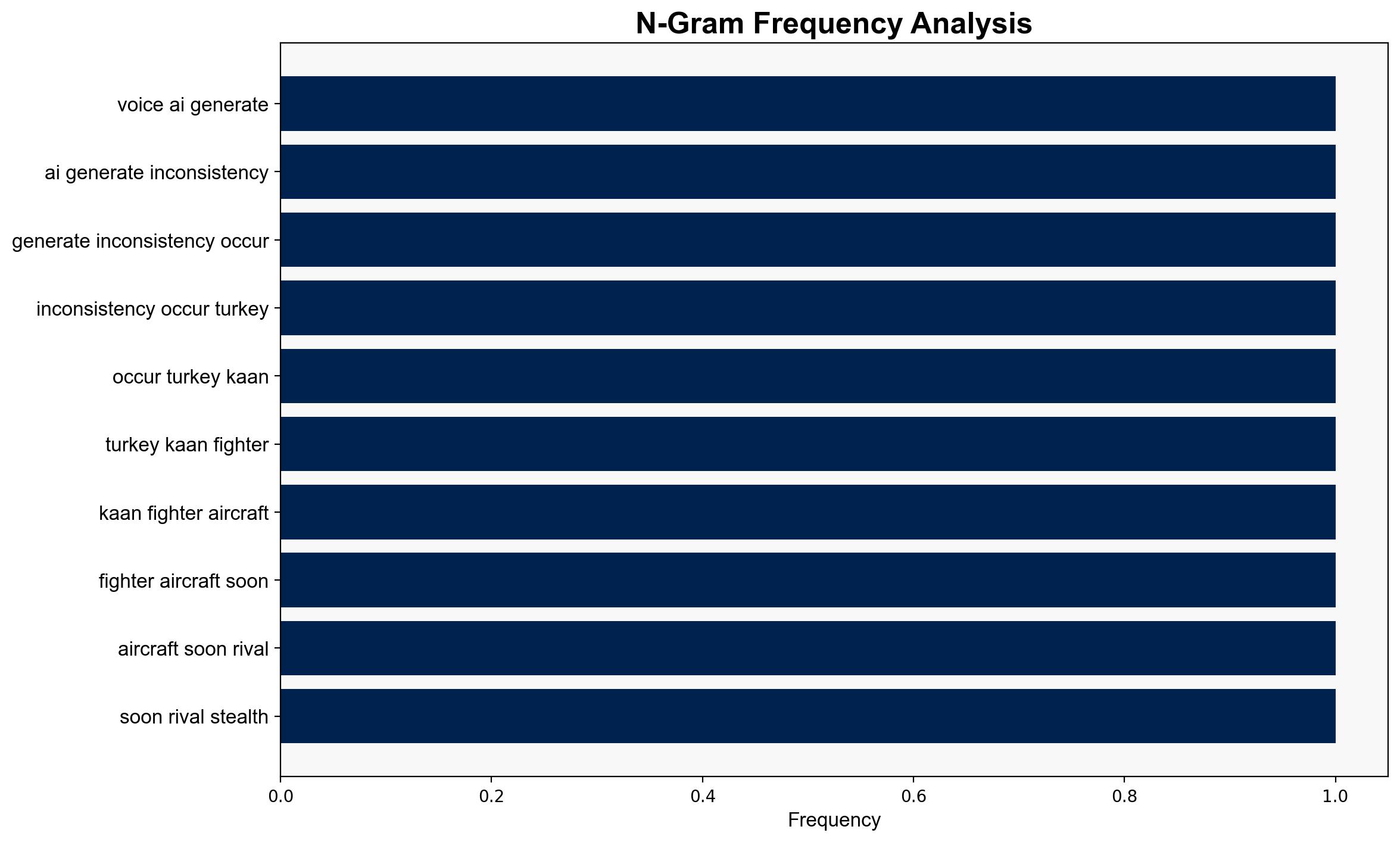NATO Ally’s Jet Fighter Rivals US F-35 Sales – Newsweek
Published on: 2025-08-05
Intelligence Report: NATO Ally’s Jet Fighter Rivals US F-35 Sales – Newsweek
1. BLUF (Bottom Line Up Front)
Turkey’s development of the KAAN fighter jet presents a potential challenge to the dominance of the US F-35 in certain markets, particularly among nations seeking cost-effective alternatives. The most supported hypothesis is that Turkey is leveraging its defense industry to gain strategic autonomy and influence in the global arms market. Confidence level: Moderate. Recommended action: Monitor Turkey’s defense collaborations and market penetration strategies to anticipate shifts in regional military balances.
2. Competing Hypotheses
1. **Turkey’s KAAN Fighter as a Strategic Autonomy Tool**: Turkey is using the KAAN fighter to assert its independence from Western military technology and to establish itself as a key player in the global defense market. This aligns with Turkey’s broader strategic pivot towards self-reliance and regional influence.
2. **KAAN Fighter as a Tactical Economic Move**: The development and export of the KAAN fighter are primarily economically motivated, aiming to capitalize on emerging markets and provide a low-cost alternative to the F-35, without significantly altering Turkey’s strategic alliances or geopolitical stance.
3. Key Assumptions and Red Flags
– **Assumptions**:
– Turkey can maintain the technological and production capabilities necessary to compete with established aircraft like the F-35.
– Emerging markets are willing to shift from established suppliers to Turkey for strategic or economic reasons.
– **Red Flags**:
– Potential overestimation of Turkey’s ability to deliver a competitive product on time and at scale.
– Lack of detailed information on the KAAN’s capabilities compared to the F-35.
– Possible geopolitical repercussions from Turkey’s defense partnerships, particularly with non-NATO countries.
4. Implications and Strategic Risks
– **Economic**: Success in exporting the KAAN could bolster Turkey’s economy and defense industry, potentially reducing reliance on Western technology.
– **Geopolitical**: Increased Turkish influence in the arms market could shift regional power dynamics, particularly in the Middle East and Asia.
– **Cybersecurity**: Development and export of advanced military technology could expose Turkey to cyber espionage and sabotage attempts.
– **Psychological**: Turkey’s assertive defense posture may alter perceptions among NATO allies and adversaries, influencing diplomatic relations.
5. Recommendations and Outlook
- Monitor Turkey’s defense agreements and partnerships, particularly with non-NATO countries, to assess potential shifts in alliances.
- Evaluate the technological capabilities of the KAAN fighter through intelligence gathering and open-source analysis.
- Scenario Projections:
- Best Case: Turkey successfully integrates into new markets without disrupting existing alliances.
- Worst Case: Turkey’s actions lead to increased tensions within NATO and with major arms suppliers.
- Most Likely: Turkey gains moderate success in emerging markets, prompting strategic recalibrations by competitors.
6. Key Individuals and Entities
– Recep Tayyip Erdogan
– Prabowo Subianto
– Mark Montgomery
7. Thematic Tags
national security threats, cybersecurity, counter-terrorism, regional focus




